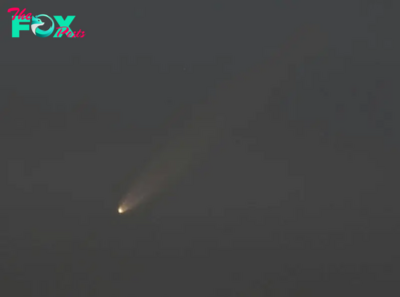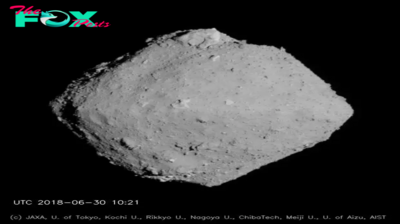Science
Saturn's planet-wide storms driven by seasonal heating, Cassini probe reveals
Like a lightbulb switching between high- and low-power modes, Saturn pumps into space varying amounts of heat based on its seasons, a fresh analysis of data from NASA's Cassini spacecraft reveals.
A noticeable effect of this flux is turbulence in Saturn's atmosphere, which whips up storms across its north and south hemispheres strong enough to wrap around the planet, scientists report in a paper published Tuesday (June 18) in the journal Nature Communications.
Such seasonal changes in radiated heat from Saturn and other gas giants are yet to be included in models describing their climates and evolutions, which assume the planets emit heat evenly in all directions and at a steady rate, Liming Li, a physics professor at the University of Houston, who a decade ago found Saturn does not emit energy evenly and is a co-author of the new study, previously told Space.com.
"We believe our discovery of this seasonal energy imbalance necessitates a reevaluation of those models and theories," Xinyue Wang of the University of Houston in Texas, who led the new study, said in a recent statement.
Astronomers have long known that Saturn returns to space double the energy it soaks up from the sun. The extra energy comes from deep within Saturn, where heat left over from its birth pushes temperatures to about 15,000 degrees Fahrenheit (8,300 degrees Celsiuss) — hotter than the surface of the sun. Much of this internal heat is a byproduct of the planet slowly compressing due to its gravity, and some may arise from friction sparked by lots of helium sinking toward the planet's core.
Related: Uranus and Neptune aren't made of what we thought, new study hints
—Enormous 'San Andreas fault' on Saturn's moon could help reveal signs of alien life
—James Webb telescope to zoom in on Uranus and Saturn in study of mysterious auroras
—Mysterious 'magic' islands that come and go on Saturn's moon Titan finally have an explanation
When NASA's Cassini spacecraft arrived at Saturn in 2004, the gas giant was in the middle of a southern summer with its south pole pointed toward the sun, while its northern hemisphere was blanketed in the darkness of winter. Equal amounts of sunlight warmed both halves of the planet in 2009, when the equinox arrived. Cassini witnessed three seasons play out in Saturn's northern hemisphere before the probe's intentional death plunge into the gas giant's atmosphere in September 2017: spring, summer and winter, each of which lasts about seven Earth years.
-

 Science2d ago
Science2d agoWhy Risky Wildfire Zones Have Been Increasing Around the World
-

 Science2d ago
Science2d agoIt’s Time to Redefine What a Megafire Is in the Climate Change Era
-

 Science3d ago
Science3d ago4 Astronauts Return to Earth After Being Delayed by Boeing’s Capsule Trouble and Hurricane Milton
-

 Science4d ago
Science4d agoThe Elegance and Awkwardness of NASA’s New Moon Suit, Designed by Axiom and Prada
-

 Science1w ago
Science1w agoSpaceX Launches Its Mega Starship Rocket. This Time, Mechanical Arms Catch It at Landing
-

 Science3w ago
Science3w agoYou Won’t Want to Miss October’s Rare Comet Sighting. Here’s How and When You Can See It
-

 Science1m ago
Science1m agoA New Spacecraft Could Help Determine if There’s Life on a Moon of Jupiter
-

 Science1m ago
Science1m agoWe Can Thank Deep-Space Asteroids for Helping Start Life on Earth



























